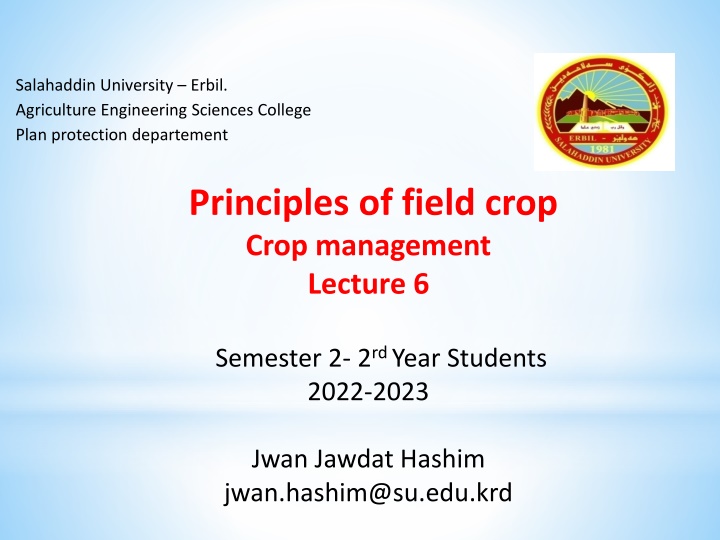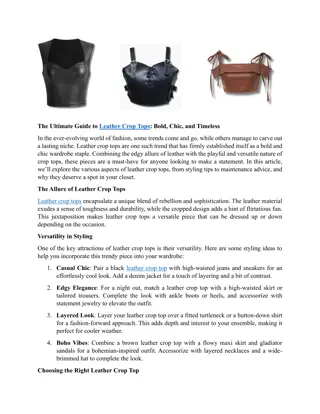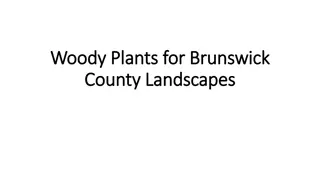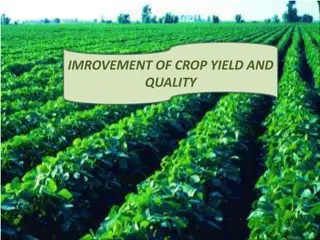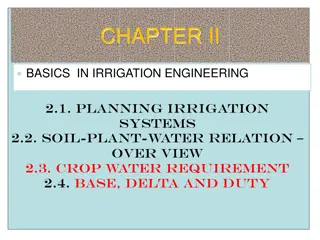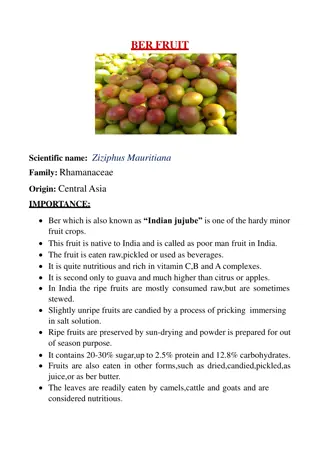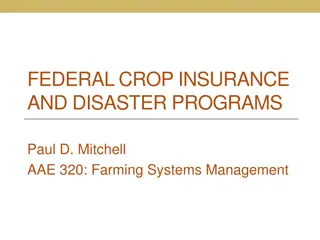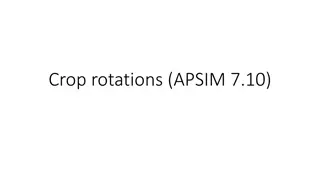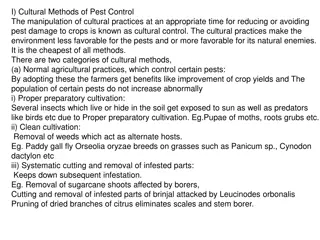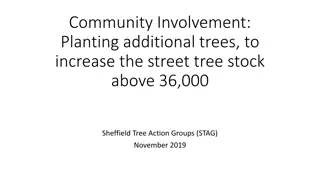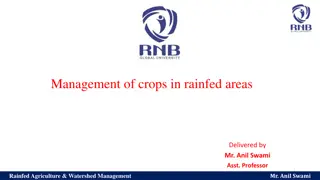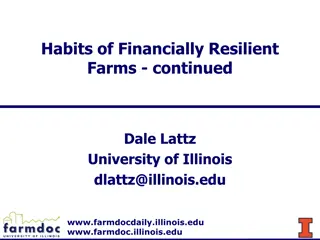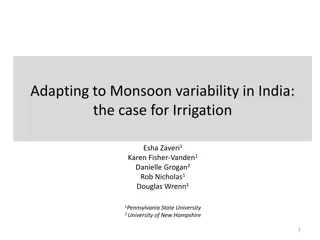Principles of Field Crop : Planting Methods and Techniques
Planting methods are essential in crop management to ensure optimal growth and yield. Learn about broadcasting, planters, drilling, row planting, and transplanting techniques. Choose the right method based on soil humidity and irrigation systems for successful crop production.
Download Presentation

Please find below an Image/Link to download the presentation.
The content on the website is provided AS IS for your information and personal use only. It may not be sold, licensed, or shared on other websites without obtaining consent from the author.If you encounter any issues during the download, it is possible that the publisher has removed the file from their server.
You are allowed to download the files provided on this website for personal or commercial use, subject to the condition that they are used lawfully. All files are the property of their respective owners.
The content on the website is provided AS IS for your information and personal use only. It may not be sold, licensed, or shared on other websites without obtaining consent from the author.
E N D
Presentation Transcript
Salahaddin University Erbil. Agriculture Engineering Sciences College Plan protection departement Principles of field crop Crop management Lecture 6 Semester 2- 2rd Year Students 2022-2023 Jwan Jawdat Hashim jwan.hashim@su.edu.krd
Crop management Methods of planting: The planting can be defined as placing or sowing the seeds (the seeds in agronomic means all plant parts that using for plant propagation include: seeds, rhizomes, tubers, bulbs . . . . etc.) in seed beds which excellently prepared for certain purpose. These methods of planting divided according to: Performance. Soil humidity. Irrigation system. According to performance: In general the methods are: 1- Broadcasting: The seeds distributed by hand over the entire surface without any rows. After that the seeds are mixed with the soil by harrow.
2- Planters : It is used to sown in lines and at a little distance from each other in the line. This type of sowing is suitable for such crops as corn (maize), cotton, beans . . . . . etc.
3- Drilling: A seed drill is a sowing device that sows the seed precisely in the soil at proper depth and distance. Then it covers them with soil. It protects the seeds from birds and saves time and labour.
4- Row planting: The rows are spaced 50-120 cm. apart. Multiple-row tractor planters are widely used for planting inter tilld-crops - ) and other row crops . . .Etc. in the bottom of furrows. ( e.g. corn, sorghum, beans, cotton,
5- Transplanting method: Some other crops can be translated such as tobacco and rice, which can be sown earlier with small amount of seeds in the nursery or under coversheet and served well and then after few weeks the strong healthy seedlings can translated in equidistance at prepared permanent field.
According to soil humidity (moisture): A-Dry land sowing: The dry seeds sown in dry land and then the water supplied after sowing directly. This method uses for most winter crops e.g. wheat, barley, flax, lentil, and some crops like cotton, corn, and sugar cane. B-Wetted land sowing: In this method, the water provided to field after preparing. Dry seeds (or after 12-24 hours soaking) will sown with good covering without any irrigation for the time that the seeds are sprouted. C- Planting with presence of water: The field will divided to plots and covered of about 5-6 cm. with water supplying, and after decreasing level of covering water to 1 cm. or a little, the seeds spreading, this method mostly uses in rice or clover cultivation.
According to irrigation system: Irrigation is a method by which water is provided for plant growth when the natural rainfall is inadequate; it's also aids in the control of soil and air temperature and to leach the soil of excess soluble salts. The irrigation may be required before planting and at intervals up to flowering. One or two irrigations beyond flowering are desirable for many seed crops. In general the lighter soils need more frequent irrigation than heavy soils. Time of sowing: The seed crops should be sown at their normal planting time mainly depended upon the seasonal crops e.g. the winter crops they should sown between October and November (wheat, barley). While the summer crops planted in March to final days of July (rice and cotton). And there are some crops has two seasonal cropping, once in spring which sown in March and autumn will sown in July, e.g. (corn and sorghum).
Thinning: This operation means to remove excess seedlings appeared in the field in order to maintain the proper crop density and to minimize the competition between plants on the essential requirements of water, minerals and solar energy. Also to keep plants a uniform distance. This can be done by hand
Replanting: It is necessary to sown some of the same seeds separately at the time of sowing the field to be used for re-sowing the failed seeds or un-germinated areas later or with pre-soaked seeds. Cultivation: This operation to be done after crops and weeds emergence in the field meantime to remove the weeds that compete the crops in addition to improve soil aeration and increase soil infiltration and keep soil moisture through closing the pores or slots in the surface soil layer. Weeding : It is intended to remove all undesirable plants that outgrowth with main crop. There are different methods uses for this purpose, e.g. chemical herbicides and mechanical control.
Harvesting: It is of great importance to harvest a seed crop at the time that will allow both the maximum yield and the best quality seed. The optimum time of harvest is: When the seed is fully mature. When weather damage has just began. When the seed easily harvested and cleaned resulting in minimum harvest losses
